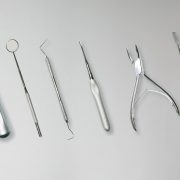There has been a lot of confusion on what to do if an employee or colleague is experiencing symptoms or has been exposed to the virus.
The following guidance from the Centers for Disease Control and Prevention (CDC) provides step-by-step instructions on how to manage such a situation.
What to do if an employee reports exposure to symptomatic or COVID-19 positive individual?
- Employers should record the date of exposure and determine if there was close contact
- If there was no close contact between the employee and individual, the employee can continue to work and should self-monitor for 14 days
- If the employee was in close contact with the individual, the employee should be advised to return home and self-monitor for 14 days while seeking a diagnosis from a healthcare provider
What can be called ‘close contact’?
Close contact is established if the employee was within 6 feet of the infected or symptomatic person or was exposed for 15 minutes without wearing PPE approved by NIOSH or CDC.
What to do if employee reports symptoms?
- Record the date of the report and symptoms
- Advise employee to self-monitor at home for 14 days, to contact a healthcare provider for testing and to notify the practice of the results
What to do if employee has positive COVID-19 results?
- Notify the local health department and follow its instructions
- Advise the employee to remain home, to contact a healthcare provider and to notify the practice of the results
When should an employee return to work after a COVID-19 diagnosis?
CDC issued updated return-to-work criteria July 17, which states that employers should not require a sick employee to provide a negative COVID-19 test result or a healthcare provider’s note to return to work.
Employees with COVID-19 who have self-quarantined can return to work when
- At least 10 days have passed since symptoms first appeared
- At least 24 hours have passed since resolution of fever without the use of fever-reducing medications
- Other symptoms like cough, shortness of breath have improved
Note: Employees with severe to critical illness or who are severely immunocompromised may return when at least 20 days have passed since symptoms first appeared.
Source: cda.org




















Comments